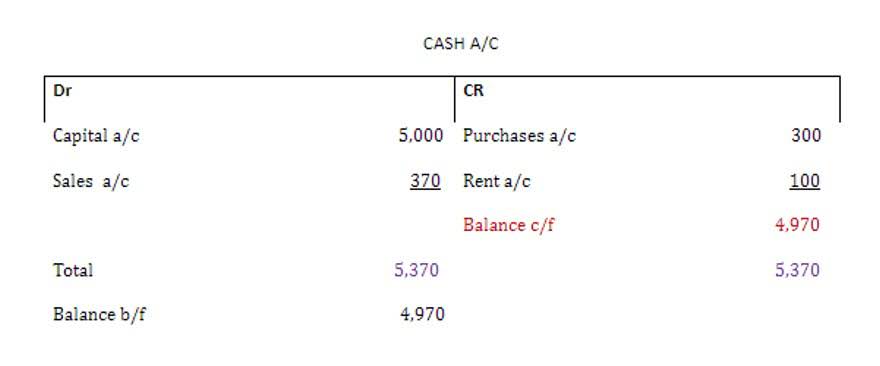
As a result, only the assets and liabilities elements of the basic accounting equation are affected by the transaction. In this instance, both the assets and liabilities are decreased, while the owner’s equity remains unchanged. Accounting equation describes that the total value of assets of a business is always equal to its liabilities plus owner’s equity. The asset “Building” increases by $100,000, the asset “Cash” decreases by $25,000, and the liability “Bank Loan” increases by $75,000. Current liabilities of a company consist of short-term financial obligations that are due typically within one year.
Expense Definition and Examples

The accounting https://cligsol.taticamarketing.com.br/helping-san-antonio-with-all-your-tax-needs/ equation forms the basic premise of all financial reporting in an organization. It implies that a company’s assets must be paid for either by borrowing or from its own funds. It shows how a company’s resources (assets) are funded either by debt (liabilities) or by contributions from the owners or shareholders (equity). This balance reflects the interconnected nature of financial transactions, preventing errors and omissions.
- In its most basic form, the accounting equation shows what a company owns, what a company owes, and what stake the owners have in the business.
- It will show as a liability if it’s financed through debt but in shareholders’ equity if it’s financed through issuing equity shares to investors.
- The expanded accounting equation is derived from the accounting equation and illustrates the different components of stockholder equity in a company.
- Any increase in these increases the financial commitment of a company and reduces equity if not managed well.
- This expanded version incorporates the income statement, linking a company’s financial performance to its financial position.
Financial Reporting
- Shaun Conrad is a Certified Public Accountant and CPA exam expert with a passion for teaching.
- If a business buys raw material by paying cash, it will lead to an increase in the inventory while reducing cash capital .
- After saving up money for a year, Ted decides it is time to officially start his business.
- As mentioned earlier there are many ways the double entry accounting system can be expressed including the use of an accounting equation, debits and credits, and a balance sheet.
- As a result of this transaction, the asset (cash) and the owner’s equity (expenses) both decreased by $2,000.
- The accounting equation is fundamental to the double-entry bookkeeping practice.
This is the fundamental building block of accounting and you must learn and apply transaction analysis before continuing further. Due within the year, current liabilities on a balance sheet include accounts payable, wages or payroll payable and taxes payable. Long-term liabilities are usually owed to lending institutions and include notes payable and possibly unearned revenue. In double entry system double aspects of each transaction are mentioned. Two accounts are influenced for each transaction- one is debit and the other is credit. Modern writers of Accounting have innovated an arithmetical equation known as accounting equation on the basis of this dual aspect of transactions.
Order to Cash
Expenses are also temporary accounts needing a beginning and ending time. The accounting equation is the foundation of the double-entry accounting system, where every transaction affects at least two accounts. This system ensures that the equation remains balanced, preventing errors and enhancing accuracy. Liabilities are claims on the company assets by other companies or people. The bank has a claim to the business building or land that is mortgaged.
For now, remember that equity represents net assets on a book value basis, assets minus liabilities. The accounting equation mirrors the structure of the balance sheet, with assets listed on one side and liabilities and equity on the other. This alignment ensures the balance sheet always reflects a company’s financial position accurately. The accounting equation underpins the structure of the balance sheet, ensuring that every financial transaction is recorded accurately. It helps businesses maintain transparency and consistency in their financial statements, enabling stakeholders to assess the company’s financial health. The accounting equation is the proposition that a company’s assets must be equal to the sum of its liabilities and equity.


This lack of clarity can make it difficult for auditors or stakeholders to trust the financial data presented to them fully. So, while necessary, these subjective estimates reduce the overall accuracy and reliability of financial statements. Although the cash has been reduced, the overall assets remain the same because it Mental Health Billing has been exchanged for equipment.
Accounts Payable Solutions

There are many activities that are not considered to be business transactions that are carried out by businesses. The monthly payment of rent to a landlord, the purchase of equipment from a supplier, and the sale of goods to customers are all examples of external the accounting equation can be expressed as transactions. These various forms of economic activity result in a wide range of payables. Below is a break down of subject weightings in the FMVA® financial analyst program. As you can see there is a heavy focus on financial modeling, finance, Excel, business valuation, budgeting/forecasting, PowerPoint presentations, accounting and business strategy.
